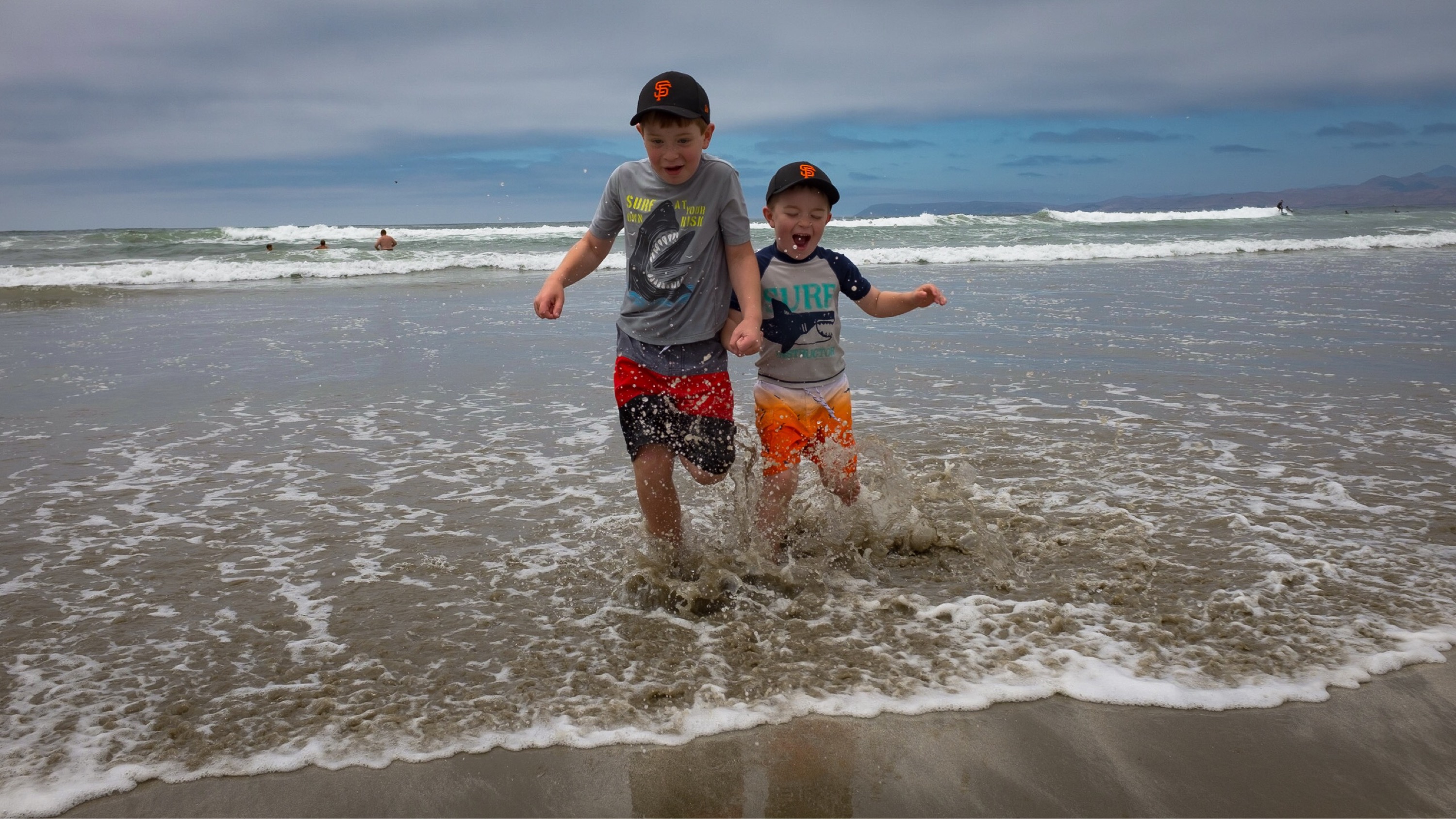

Splashing Boys. Morro Bay, CA 1/800s at f/8.0, ISO 200
A few weeks ago, the boys and I set out on an adventure down the Pacific Coast Highway. After we found a beach near Morro Rock, the boys quickly took to the water. Always the same: chase the surf out to sea, then retreat as it crashed back towards them.
It was bright, the boys were moving fast, and the aperture of my Fuji X100T was set to f/8. At some point the boys started running towards me, kicking high in an attempt to splash water on my face. After the third or fourth time, I knelt down in the sand, aimed the camera in the distance, and half pressed the shutter release. Focus locked, I then reframed on the duo headed towards me, and waited. As soon as they filled the viewfinder, I closed the shutter.
Only later did I realize they were holding hands.
There are a few things in this image that happened on purpose, but most of it was luck. The line the surf draws across the sand. Just the right amount of ocean spray to add depth. Luck.
As I continue to explore photography, my hope is for more things to happen on purpose.
For example, I know with the lens focused near infinity, and the aperture set to f/8, any object more than three feet away will be in focus. This leaves me free to concentrate exclusively on composition. And when focus is locked, the shutter closes immediately. If the boys weren’t too close when I closed the shutter, the entire image would be sharp.
By asking the camera to do less, I had more control to focus on what mattered for the photograph.
Had I worried about a shallow depth-of-field, which would blur the background and isolate the boys, I’d miss the shot. The X100T is known for slow auto-focus. Instead of fretting over settings or gambling with continuous auto-focus, I knelt down and got a better angle.
The photo succeeds because I engaged the boys on eye-level. Had I relied on the camera to do more, I would be cursing its limitations. Instead, I used a classic technique and shot the photograph I wanted1.
After taking the photo I was soaked, and the boys were laughing at me. When I got home, I had to take a wet cotton swab to wipe away the encrusted salt from the knobs and dials on the camera. A telephoto lens would’ve saved me some clean-up, but I’d have missed the fun.
The photograph was worth it. I look at those faces and I’m right back on the beach, splashing and playing.
The sub-headings for this article are an homage to an old mantra of documentary photographers. While I wasn’t on a battlefield or photographing a busy street corner, I did find the technique useful to capture fast-moving children. ↩
About the Author
Rob Rhyne is an American designer, developer and writer. He founded MartianCraft, where his teams developed hundreds of applications for clients. He is a published author, and acclaimed public speaker. On occasion, he writes music and takes photographs.
© 2017 Rob Rhyne. All Rights Reserved. Made in California.